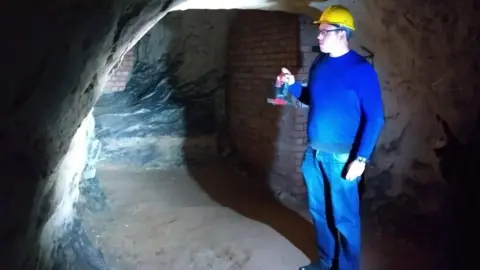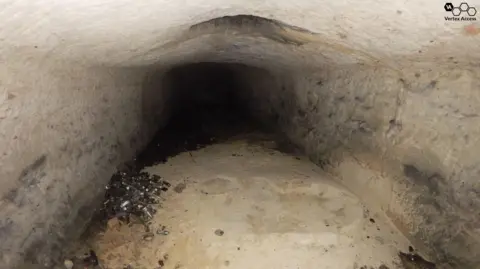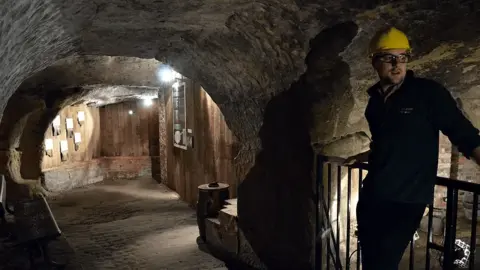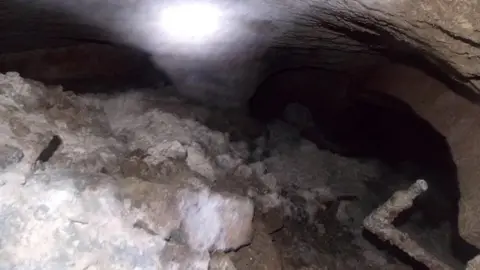Number of caves discovered under city passes 900
 Supplied
SuppliedThe number of recorded caves underneath a city renowned for their presence has risen to 924, an archaeologist has confirmed.
Nottingham is built upon soft sandstone, which meant that caves were relatively easy to carve out, and many date back to the medieval period.
Scott Lomax, the city council's archaeologist, said the figure was over double the number of discovered caves, which were known about when modern records began in 2009.
"I feel confident that within the next year, we'll be able to say that Nottingham has more than 1,000 caves representing 1,000 years of history," he added.
 Supplied
SuppliedThe caves have been used for a variety of reasons throughout history - ranging from dungeons to bomb shelters.
As far back as 868, a Welsh monk named Asser referred to Nottingham as Tig Guocobauc, meaning "house" or "place of caves".
Beneath the former Broadmarsh Shopping Centre are the last remnants of Drury Hill, a street in the former 19th Century slums of Narrow Marsh. Overcrowding led to people living in grotto-like caves.
The City of Caves attraction on Cliff Road allows visitors to see the basement walls of those slums and tanneries.

Mr Lomax said the majority of the city's caves were underneath private property, as people would historically dig them out to "maximise space" on their land.
"For instance, a lot of pubs in the city have caves beneath them because they're ideal for the storage of beer," he said.
However, many caves are also found under homes, which he said people should not be worried about.
"It can be a great asset to the property," he told the BBC.
"I have given advice to the owners so they can create games rooms, or even a cinema room, bringing these important historical spaces back into use.
"They reflect so much of the history of the city, from its medieval past with industries such as tanning and malting... through to more recent aspects of history, such as keeping [people] safe during air raids."
 Supplied
SuppliedThe majority of caves found by Mr Lomax are discovered by trawling through property records dating back hundreds of years and looking for any mentions of a cave.
His work is intended to avoid accidental discoveries, for example, during construction work, as it makes it harder to preserve the newly-found cave.
"We need to make sure that we know where caves are located long in advance of any groundwork beginning, so that they can be protected during development," he said.
The 42-year-old said he had roughly 300 more documents to work through and expects to discover hundreds more caves over the next two years.
Follow BBC Nottingham on Facebook, on X, or on Instagram. Send your story ideas to [email protected] or via WhatsApp on 0808 100 2210.
